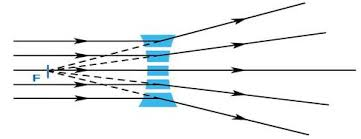LIGHT
Sources of Light
The Concept of Light
Explain the concept of light
Light can carry both energy and information. It both is the way the sun delivers energy to the world, making life possible, and it is a very important way that we learn about the world, through our sense of sight.
Sources of Light
Identify sources of light
The sun is the natural source of light. On the other hand, torch, candle, kerosene lamp, electric bulb, Florescent lamp, etc are some common examples of artificial sources of light, bodies which give out light are called Luminous bodies .
Difference between Luminous and Non-luminous Bodies
Distinguish luminous from non-luminous bodies
Non-luminous bodies are bodies which do not produce light, non-luminous bodies are seen because they reflect light from luminous bodies in such a way that our eyes receive light from travel in a straight line. Due to transmission of light, we are able to see.
Propagation and Transmission of Light
The Concept of Rays and Beam of Light
Explain the concept of rays and beam of light
A straight line showing a path of light is called a ray which is the direction of the path taken by light. Rays of light are represented in diagrams by full straight line with arrow marking the direction in which the light is travelling
A beam is a stream of light rays, and it is usually represented by a number of rays. Rays of light can converge (converging rays) or they can diverge (diverging rays)
A ray of light

Parallel rays

Diverging rays

Converging rays

Verification that Light Rays Travel in Straight Line
Verify that light rays travels in straight line
Activity 1
Aim: To demonstrate the rectilinear propagation of light.
Materials and apparatus
- The pieces of card board with a hole in each.
- Source of light, eg. a candle.
Procedures:
- Put the pieces of cardboard with the holes in a straight line.
- Arrange them to a distance of about 50cm apart.
- Place a lighted candle at one end of cardboard A. observe the light from behind cardboard C.
- Now displace any one of the pieces of cardboard, eg. Cardboard B.

Propagation of light in straight line.
Observations
When observing from card C, the candle can be seen. Displacing any one of cardboards, the candle can no longer be seen as the holes are no longer in a straight line. This happens due to the fact that light travels in a straight line.
Transparent, Translucent and Opaque Materials
Identify transparent, translucent and opaque materials
Objects can be grouped according to transmission of light through them, ie. The degree passage of light as light rays falls on their surface.
Opaque bodies
These are bodies which do not allow light to pass through them, ie. Stones, wood, concrete walls and bodies.
Translucent bodies
These are bodies which allow small amount of light falling on them to pass through e.g oiled paper, some plastic materials and tinted glass.
Transparent bodies
These are bodies which allow all light to pass through them, e.g glass, pure water and air. The transmission of light through different bodies can be investigated by performing other experiment.
Activity 2
Aim: To investigate transmission of light.
Materials
- Sheet of paper
- Sheet of glass
- Tinted glass
- Card board
- Oil paper
Guiding questions
- Which of the materials are opaque?
- Which of the materials are transparent?
Reflection of Light
The Concept of Reflection of Light
Explain the concept of reflection of light
Reflections are obtained from hard and highly polished surfaces such as mirrors and sheets of glass than from rougher surfaces, when light falls on the surface at an inclined plane angle, it is sent back into the air. This is also the case when light falls on all highly polished metals. If light falls on a polished surface at an angle 900, it is sent back into the air on the same path.
Difference between Regular and Irregular Reflection of Light
Distinguish regular from irregular reflection of light
Surface can be classified into two types:
- Highly polished surfaces, examples are mirror, polished cooking utensil and silvered iron sheets.
- Rough surface, examples are unpolished wooden table, sheet of paper and cobblestone road.
Application of the Laws of Reflection of Light
Apply the laws of reflection of light
Reflection is guided by some natural laws called “Laws of reflection” the Laws of reflection state that:
- The incident ray, the reflected ray, and the normal at the point of incidence all lies in the same plane.
- The angle of incidence is equal to the angle of reflection.
Image Formed by a Plane Mirror
Describe image formed by a plane mirror
A clear image is recognised as a result of reflection of the beam striking the highly polished surfaces. This is called regular reflection.

Regular reflection.
If mirrors were replaced by a piece of sheet of paper, there would be no image to be seen even as a result of diffuse or irregular reflection, this is shown below.

Irregular or diffuse reflection.
Terms used in reflection
When light rays strike a surface (e.g a mirror) there are two rays of importance, namely Incident and Reflected rays, see the figure below:

Reflection of light rays.
- MO is a ray of light falling on a mirror; it is called the incident ray.
- OP is a ray of light leaving the mirror after reflection; it is called the reflected ray. Line NO is perpendicular to the mirror , it is called the normal. ANGLE MON is called the angle of incidence. (i) this is the angle between the incident ray and the normal , angle NOP is called the angle of reflection (t). this is the angle between reflected ray and the normal.



No comments:
Post a Comment